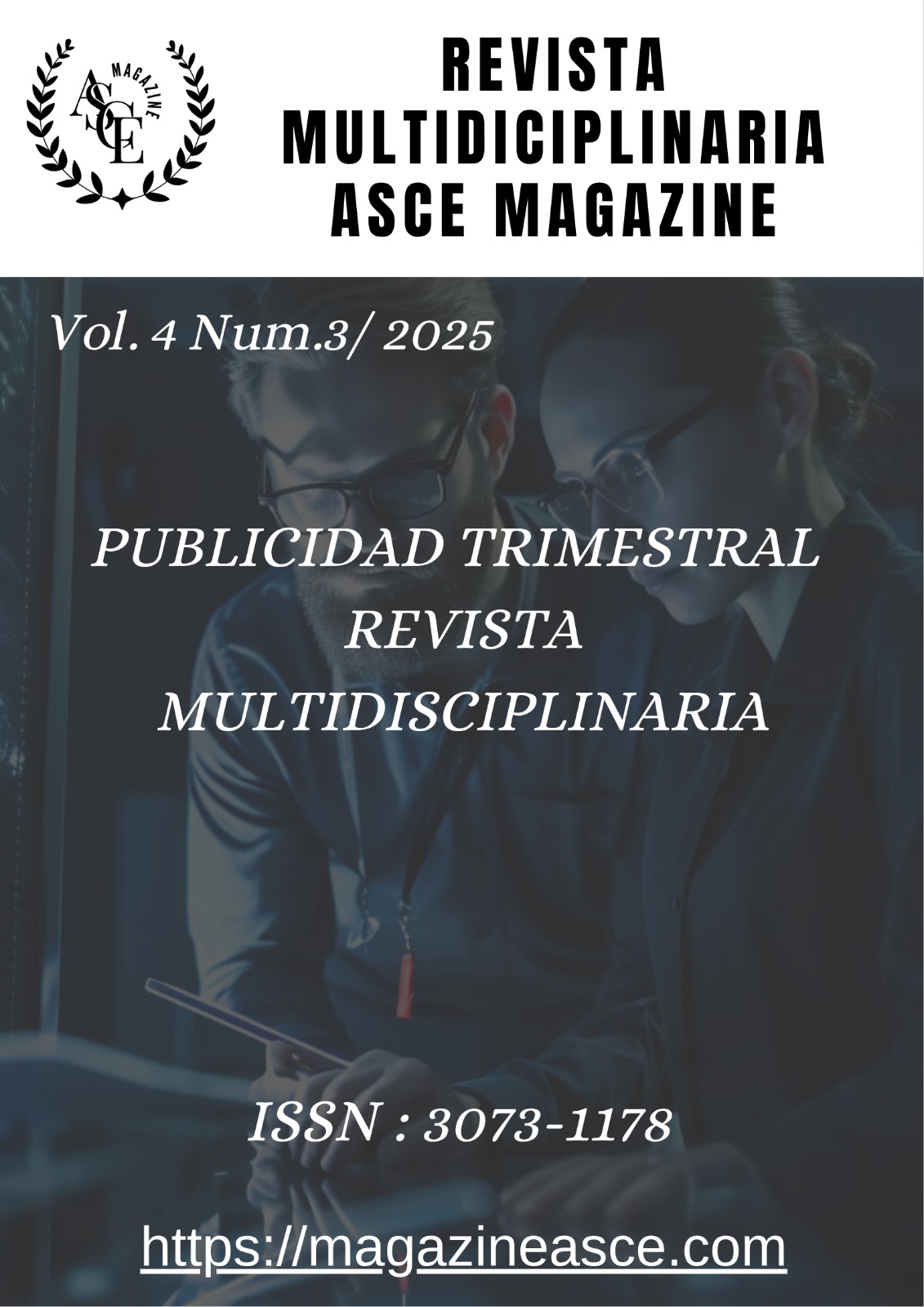E-Government as a Tool for Territorial Cohesion in the Health Sector: Evidence from the Ecuadorian Territory
DOI:
https://doi.org/10.70577/ASCE/1581.1600/2025Keywords:
E-Government, Public Health, ICT, Ecuador, Healthcare Services, Telemedicine.Abstract
Within the current framework of digital transformation in the public sector, this study provides an in-depth examination of the impact of e-government strategies implemented by Ecuador’s Ministry of Public Health (MSP) to optimize healthcare services. Employing a mixed-methods approach, the research combined structured surveys, semi-structured interviews, and documentary analysis of administrative data from two representative districts: an urban area (Pueblo Viejo) and a rural area (Urdaneta). The findings reveal substantial improvements in operational efficiency, service accessibility, and perceived quality in the urban context, where technological infrastructure, staff training, and institutional leadership have facilitated the adoption of digital tools such as online appointment scheduling, electronic medical records, and telemedicine. Conversely, rural areas continue to face significant gaps linked to limited connectivity, low levels of digital literacy, and minimal institutional promotion, hindering effective access to and use of these platforms. The qualitative analysis identified critical factors such as user trust, administrative overload, and unequal infrastructure, all of which condition the sustainability of digitalization. The study concludes that the success of these strategies relies not solely on technological availability but on the balanced integration of human capacities, infrastructure, and territorially sensitive public policies. It is recommended to foster investment in connectivity, continuous training programs, and technologies adapted to rural contexts, in order to ensure equitable, efficient, and high-quality healthcare, thereby strengthening territorial cohesion and contributing to the achievement of the Sustainable Development Goals (SDGs) in health.
Downloads
References
Bermúdez Vizcaíno, L., Pérez, C., & Valderrama, C. (2015). La gestión del gobierno electrónico y su impacto en la calidad del servicio público: un análisis desde la e-Salud. Revista Científica, 19(3), 231–243.
Bowen, G. A. (2009). Document analysis as a qualitative research method. Qualitative Research Journal, 9(2), 27–40. https://doi.org/10.3316/QRJ0902027 DOI: https://doi.org/10.3316/QRJ0902027
Braun, V., & Clarke, V. (2006). Using thematic analysis in psychology. Qualitative Research in Psychology, 3(2), 77–101. https://doi.org/10.1191/1478088706qp063oa DOI: https://doi.org/10.1191/1478088706qp063oa
Calderón, C., & Acuña, C. (2017). Cohesión territorial y acceso a servicios digitales en América Latina. Comisión Económica para América Latina y el Caribe (CEPAL).
Creswell, J. W., & Plano Clark, V. L. (2011). Designing and conducting mixed methods research (2nd ed.). SAGE Publications.
Criado, J. I. (2014). Administración electrónica y gestión pública: nuevos retos en la era de la información. Revista del CLAD Reforma y Democracia, (58), 1–28.
Field, A. (2013). Discovering statistics using IBM SPSS Statistics (4th ed.). SAGE Publications.
Gil-García, J. R., Helbig, N., & Ojo, A. (2018). Being smart: Emerging technologies and innovation in the public sector. Government Information Quarterly, 35(2), S99–S105. https://doi.org/10.1016/j.giq.2018.03.001 DOI: https://doi.org/10.1016/j.giq.2018.03.001
Gomis-Balestreri, A. (2017). Gobierno electrónico y transparencia: de la digitalización al gobierno abierto. Revista Latinoamericana de Política y Gobierno, 1(1), 89–112.
Heeks, R. (2006). Implementing and managing eGovernment: An international text. SAGE Publications. DOI: https://doi.org/10.4135/9781446220191
Hernández, R., Fernández, C., & Baptista, P. (2014). Metodología de la investigación (6.ª ed.). McGraw-Hill.
Lippez-de Castro, S., & García Alonso, J. (2016). La participación ciudadana en la administración electrónica en América Latina: retos y perspectivas. Revista Gestión y Análisis de Políticas Públicas, (15), 61–80.
Martínez, J. A., & Jordán, D. (2019). Desigualdad digital y territorio: el acceso a internet en áreas rurales. Revista Internacional de Sociología, 77(3), e123. https://doi.org/10.3989/ris.2019.77.3.18.123
Miles, M. B., Huberman, A. M., & Saldaña, J. (2014). Qualitative data analysis: A methods sourcebook (3rd ed.). SAGE Publications.
Molina Alegría, A. (2017). Gobierno electrónico para el desarrollo territorial: hacia una agenda pública digital inclusiva. Instituto Latinoamericano de Planificación Económica y Social (ILPES) – CEPAL.
Muñoz-Cañavate, A., & Hipola, P. (2011). El uso de la administración electrónica por los ciudadanos españoles. El Profesional de la Información, 20(5), 539–546. https://doi.org/10.3145/epi.2011.sep.04 DOI: https://doi.org/10.3145/epi.2011.sep.04
OECD. (2021). Territorial Approach to the Sustainable Development Goals in Ecuador. OECD Publishing. https://doi.org/10.1787/8c4d0f48-en
Pacheco Redondo, M. Á., Fernández Miguélez, J., & Jiménez de la Fuente, J. (2017). Inclusión digital y cohesión territorial: el papel de las TIC en el desarrollo local. Revista de Estudios Regionales, (109), 63–88.
Parasuraman, A., Zeithaml, V. A., & Berry, L. L. (1988). SERVQUAL: A multiple-item scale for measuring consumer perceptions of service quality. Journal of Retailing, 64(1), 12–40.
Saip, C., Gutiérrez, M., & Alfaro, D. (2016). Desafíos de interoperabilidad en servicios de e-salud en países en desarrollo. Revista Chilena de Salud Pública, 20(1), 48–55. https://doi.org/10.5354/0719-5281.2016.40556 DOI: https://doi.org/10.5354/0719-5281.2016.39292
Taylor, S. J., & Bogdan, R. (1987). Introducción a los métodos cualitativos de investigación. Paidós.
United Nations. (2020). E-Government Survey 2020: Digital Government in the Decade of Action for Sustainable Development. United Nations Department of Economic and Social Affairs. https://publicadministration.un.org/egovkb/en-us/Reports/UN-E-Government-Survey-2020
Velásquez, L., & Ramírez, A. (2018). Gobernanza territorial y brechas digitales en América Latina. Revista Latinoamericana de Ciencias Sociales, Niñez y Juventud, 16(2), 891–905. https://doi.org/10.11600/1692715x.16224170718
Wahid, F. (2012). Explaining e-government implementation: A case study of Indonesia. International Journal of Information Management, 32(2), 155–165. https://doi.org/10.1016/j.ijinfomgt.2011.11.003 DOI: https://doi.org/10.1016/j.ijinfomgt.2011.11.003
Downloads
Published
How to Cite
Issue
Section
License
Copyright (c) 2025 Olivia Gardenia Peña Pinela

This work is licensed under a Creative Commons Attribution-NonCommercial-NoDerivatives 4.0 International License.
Eres libre de:
- Compartir : copiar y redistribuir el material en cualquier medio o formato
- Adaptar : remezclar, transformar y desarrollar el material
- El licenciante no puede revocar estas libertades siempre y cuando usted cumpla con los términos de la licencia.
En los siguientes términos:
- Atribución : Debe otorgar el crédito correspondiente , proporcionar un enlace a la licencia e indicar si se realizaron cambios . Puede hacerlo de cualquier manera razonable, pero no de ninguna manera que sugiera que el licenciante lo respalda a usted o a su uso.
- No comercial : no puede utilizar el material con fines comerciales .
- CompartirIgual — Si remezcla, transforma o construye sobre el material, debe distribuir sus contribuciones bajo la misma licencia que el original.
- Sin restricciones adicionales : no puede aplicar términos legales ni medidas tecnológicas que restrinjan legalmente a otros hacer algo que la licencia permite.





































